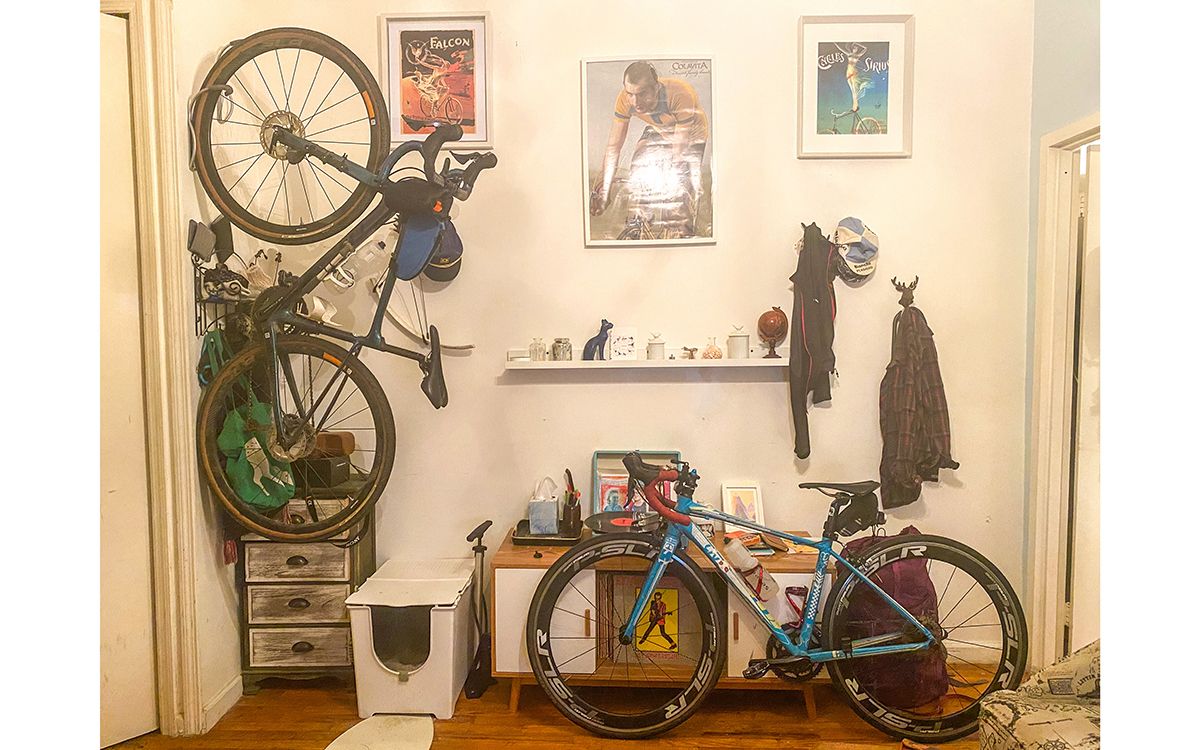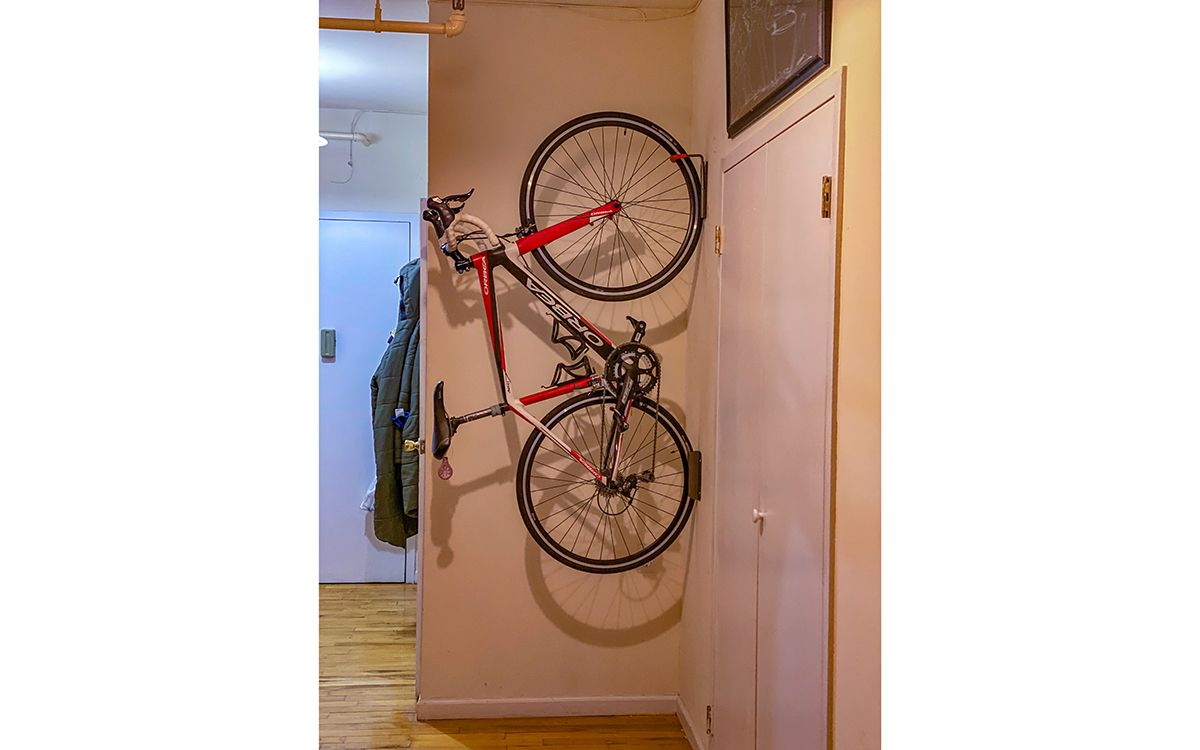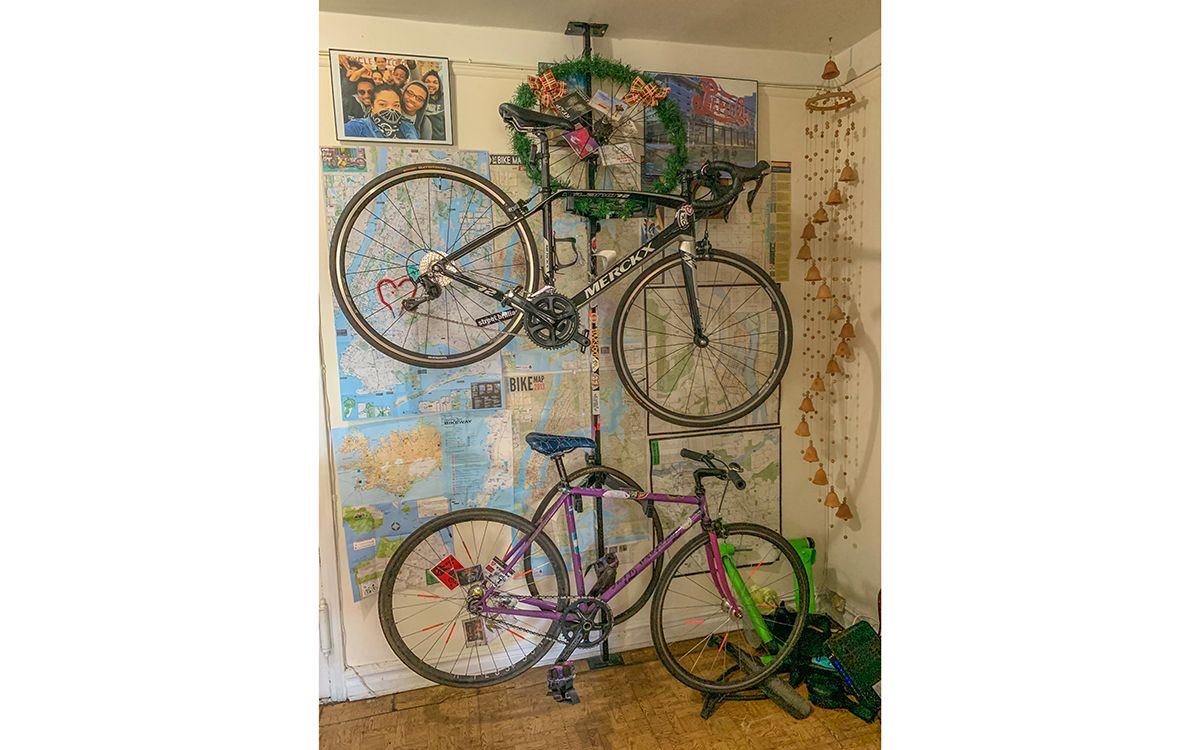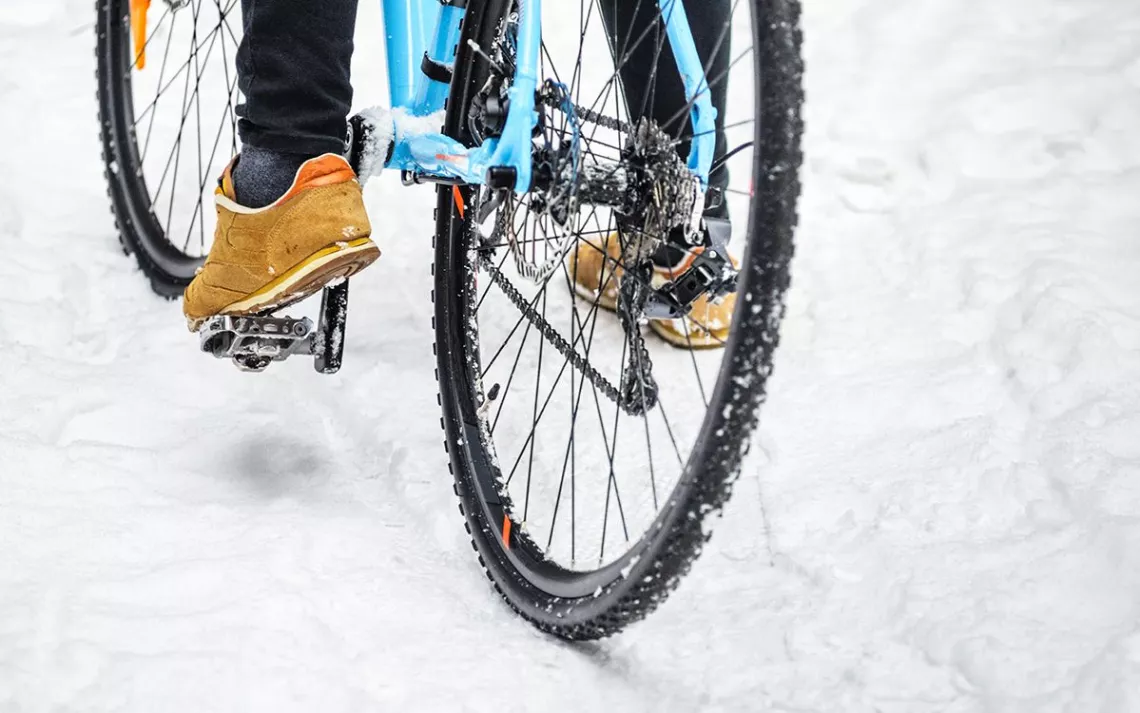It’s Winter—You Should Be Storing Your Bike Inside
Behold storage solutions to suit even the tiniest of apartments
Riding in the cold and wet can be completely safe—and fun—but you don’t want to store your bike in these conditions. Stashing your bike on a porch or in the yard, or chaining it to a fence, may be quick and convenient, but this leaves it susceptible to theft (thus leaving you reliant on carbon-based transportation). Moreover, moisture and cold weather can also damage your bike, particularly during harsh winter months.
Although weather-related degradation may not occur immediately, it will happen eventually. So even if your bike has been fine outside thus far, now is the time to bring it in.
If you’re blessed with a large living space, you may be able to get by with leaning bikes against one another in a wide hallway or spare room. But if you, like me, inhabit more cramped quarters, you may need to consider purchasing (or building) an indoor bike rack.
Bike racks come in all shapes, size, colors, and materials, and some don’t even require power tools to install. Regardless of your budget or your home’s layout and aesthetic, there’s a bike rack out there for you. Just make sure to check the rack’s dimensions and weight-bearing capacity prior to purchasing.

Shared Storage Rooms
Increasingly, apartment buildings and condos are offering residents indoor bike storage rooms. In some cases, bike storage is a free perk; in others, there’s a one-time or annual fee. In all cases, you’ll want to consider whether or not it’s safe to leave your bike in one of these rooms. If you notice that bikes tend to be piled up on top of one another, there’s a chance your bike could be damaged when someone else tries moving their own bike. And if a careless bicycle owner locks their bike to your bike—which happens more often than you’d think—you could end up in a pickle.
You’ll also want to consider the likelihood of your bike being stolen from the room. If the building employs a doorperson, or if there is some sort of security in place, your bike will likely remain safe; otherwise, the bike room may just provide an easy way for a thief to access multiple bikes. Even if you consider the shared storage room to be a safe place to store your ride, you’ll still want to lock it to whatever rack is provided. If no rack is available, lock your wheels to the frame—that way, a would-be thief can’t just wheel the bike away. (Just be sure you don’t lock your bike to anyone else’s!)
Vertical Wall Racks
 Vertical wall racks are ideal for homes with an unused corner that isn’t quite big enough for a bike to fit horizontally. Note that some strength and dexterity is required to lift and hold the bike steady until it latches on to the hook that will keep it in place. The higher the rack is installed, the more challenging it will be to hang up your ride, but if you live in a small apartment, you may need the extra storage space below. In New York City, I use a Racor vertical wall rack that I installed so high that I occasionally need to use a small stool to hang my bike, but I appreciate having a few feet of clearance below for storage.
Vertical wall racks are ideal for homes with an unused corner that isn’t quite big enough for a bike to fit horizontally. Note that some strength and dexterity is required to lift and hold the bike steady until it latches on to the hook that will keep it in place. The higher the rack is installed, the more challenging it will be to hang up your ride, but if you live in a small apartment, you may need the extra storage space below. In New York City, I use a Racor vertical wall rack that I installed so high that I occasionally need to use a small stool to hang my bike, but I appreciate having a few feet of clearance below for storage.
Freestanding Bike Racks
The beauty of freestanding bike racks is that they’re strong enough to support multiple bikes and they often require no tools to install. Not only does this make set-up and take-down easier, but you also won’t have to worry about drilling holes into your walls. While most freestanding bike racks rely on wide, sturdy (and somewhat clunky-looking) feet for support, the Delta Cycle Michelangelo is an elegant two-bike rack that leans against the wall. It’s an easy-to-assemble design that uses rubber bumpers to ensure your bikes—and walls—remain scuff-free.
Floor-to-Ceiling Pole Racks
 Though freestanding racks may be easier to install, floor-to-ceiling pole racks tend to be more stable and are able to accommodate more weight. They’re a good option if you have multiple heavy bikes and/or if you can’t risk a freestanding rack potentially falling over. The Topeak Dual-Touch bike stand can hold up to four bikes and is sufficiently heavy-duty to be a bike shop go-to.
Though freestanding racks may be easier to install, floor-to-ceiling pole racks tend to be more stable and are able to accommodate more weight. They’re a good option if you have multiple heavy bikes and/or if you can’t risk a freestanding rack potentially falling over. The Topeak Dual-Touch bike stand can hold up to four bikes and is sufficiently heavy-duty to be a bike shop go-to.
Floor Bike Racks
While most indoor bike racks require you to lift your bike onto a suspended or wall-mounted stand, floor racks allow you to simply slide your bike onto the rack. Floor racks, such as the Bike Hand push-in rack stand, do take up additional floor space, but they’re especially helpful if your bikes are heavy and/or you have difficulty lifting them.
Horizontal Wall Hanger
An infinite number of horizontal wall mounts exist, ranging from “organic” wood grain racks to industrial-style mounts crafted from old gas pipes. If you’re hoping to find a rack to fit a certain aesthetic, head over to the craft site Etsy, where some handmade racks even come with cubby holes, drawers, and hooks to stash bike lights, gloves, tools, and other gear.
If you, yourself, are handy, you might even want to try building your own rack. A friend of mine built a shelf-style rack by drilling chrome drop handlebars into the wall upside down. The top tube of her bike rests on the handlebar rack while the curves of the drop bars (now inverted so they face upward) prevent the bike from falling. The set-up is sleek and attractive, yet functional and compact.
 The Magazine of The Sierra Club
The Magazine of The Sierra Club




